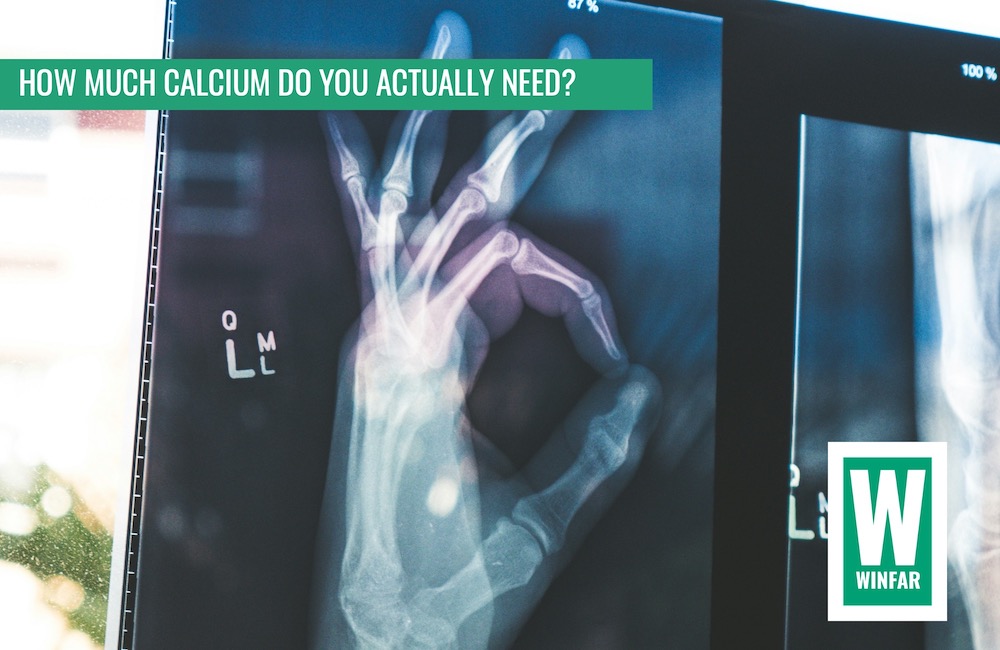Most of us learn that calcium is essential for bone health in school – but the truth is our body needs calcium for other important functions as well, including those involving muscles, nerves, blood vessels, and the release of hormones and enzymes. It follows. therefore that a deficiency in calcium, impact more than just your bones and has side effects that include everything from fatigue to seizures.
As we age, our bodies ability to maintain calcium balance worsens, and bone loss accelerates. Since the body doesn’t produce calcium on its own, calcium intake should be balanced with vitamin D, which the body needs for absorption.
How Do We Get Calcium in Our Diet?
The best natural sources of calcium include:
- Dairy products, such as cheese, milk and yogurt
- Dark green leafy vegetables, such as broccoli and kale
- Fish with edible soft bones, such as sardines and canned salmon
- Calcium-fortified foods and beverages, such as soy products, cereal and fruit juices, and milk substitutes
How to Know If You Are Getting Enough Calcium
In the short term, most symptoms of calcium deficiency are subtle – so subtle, in fact, that you may not notice them at all. But if left unaddressed, those symptoms can worsen.
While it’s possible to get a blood test to determine your vitamin D level to see if you might be deficient, calcium levels in the blood are usually normal even when your calcium intake is low. That’s because your body will take calcium from your bones to supply what’s needed to function.
If you suspect you aren’t getting enough calcium from the food you eat, talk to your healthcare provider about taking a supplement.
Calcium Deficiency Symptoms
The following symptoms may point to a calcium deficiency. Keep in mind that some of these symptoms occur only during an acute illness, when serum calcium levels drop to dangerous levels.
Fatigue:
This deceptively simple word can indicate a complex symptom. Fatigue from hypocalcemia is the result of your cells being undernourished, causing body aches, stiffness, and even a depressed mood.
Poor oral health:
Although your teeth aren’t bones, they are anchored in them. If your body is leeching calcium from your bones, it can make your teeth more susceptible to decay and loosening, possibly leading to periodontal disease.
Muscle pain and spasms:
Calcium ensures our muscles function properly, helping them contract and relax. Hypocalcemia can make you weaker, causing more aches, pains, stiffness, and spasms.
Cognitive issues:
Deprivation of calcium can lead to symptoms such as brain fog, dizziness, and confusion. Preliminary evidence suggests calcium intake may even affect mental health.
Numbness and tingling in your fingers:
Calcium plays a vital role in the central nervous system. Deficiency may impact nerves, especially in extremities (hands, fingers, feet, and toes).
Seizures:
Nutritional deficiencies can sometimes trigger seizures.
Abnormal heart rhythm:
Calcium is crucial for muscle function, and your heart is a muscle. Dysregulation of calcium can lead to ventricular arrhythmias, which can be serious and potentially deadly. If you experience chest pain along with shortness of breath, lightheadedness, or fainting, seek emergency medical attention immediately.
So, How Much is Needed?
It’s important to get the right amount of calcium. Too little can cause hypocalcemia, weak bones, and increased risk of bone fractures. Too much can lead to hypercalcemia, kidney damage, and kidney stones. The tolerable upper limit (UL) for adults ages 51 years and older is 2,000 milligrams (mg).
Food Sources of Calcium
Good sources of calcium include:
Yogurt (plain)
Mozzarella cheese
Milk (nonfat)
Fortified soy milk
Fortified orange juice
Fortified cereal
Turnip greens (cooked)
Almonds
Kale
Bok choi
Broccoli
Nutrition Needs for Older Adults
Older adults who do not consume dairy may have a more difficult time getting the calcium they need. Those who do not consume dairy should be mindful to consume vegetables with calcium and foods and beverages fortified with calcium. Supplementation may be needed through a multivitamin or single vitamin supplement. It’s important that older adults work with their healthcare team to determine whether supplementation is needed.
Strategies to Help Older Adults Optimise Calcium Intake Daily
- Purchase foods naturally high in calcium like dairy products, kale, bok choi, and broccoli.
- Look for food items fortified with calcium, like beverages and cereals.
- Read food labels for calcium content.
- Breakfast is a good opportunity for high calcium foods, from cereal to milk.
- Prepare cooked vegetables high in calcium, like kale, bok choi, and broccoli.
- Offer beverages with calcium, such as milk or fortified orange juice.
- Include dairy for snacks, such as cottage cheese, yogurt, and cheese.
While some of the symptoms of calcium deficiency may be scary, there’s good news: The underlying condition is easy to treat! But before you go stalking the shelves of your local pharmacy for a supplement, make an appointment with a healthcare
provider. They’ll be able to assess your risk for calcium deficiency and – if needed – determine what the safest dose is for you.
Source references:
https://www.ncbi.nlm.nih.gov/pmc/articles/PMC7775006/
https://consultqd.clevelandclinic.org/understanding-the-endocrine-impact-of-vitamin-d-calcium-deficiency-in-the-elderly
https://newsnetwork.mayoclinic.org/discussion/calcium-intake-for-adults-over-age-55/
https://acl.gov/sites/default/files/nutrition/Nutrition-Needs_Calcium_FINAL_508.pdf
https://health.clevelandclinic.org/are-there-any-telltale-signs-that-youre-not-getting-enough-calcium

